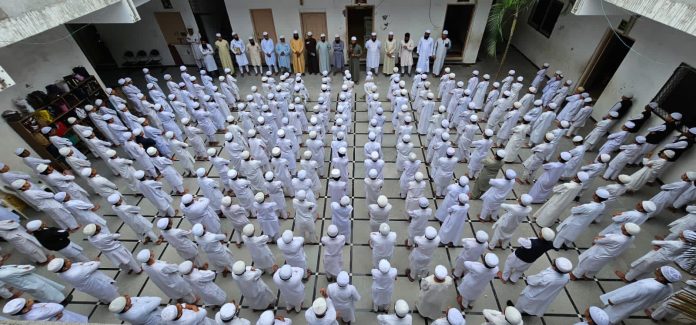– Mohd. Naushad Khan
Madrasas have played a pivotal role in the cultural and religious life of Indian Muslims for centuries. These institutions, rooted in a long tradition of Islamic scholarship, primarily provide religious education, though many also incorporate modern subjects like mathematics, science, and languages.
However, in recent years, madrasas in India have faced increasing political and legal scrutiny. The challenges they encounter are multifaceted, involving issues of state regulation, minority rights, national security narratives, and educational reform.
The Constitution guarantees the right to religious freedom and minority rights. Article 30(1) grants religious and linguistic minorities the right to establish and administer educational institutions of their choice. Madrasas fall under this provision and have historically operated with a degree of autonomy. This autonomy, however, is increasingly being tested, as state and central governments push for regulation and oversight in the name of national integration, modernisation, and even counter-extremism.
One of the most significant political challenges madrasas face is the persistent stereotyping and politicisation of their role in society. Certain sections of the political establishment have portrayed madrasas as breeding grounds for extremism. This has intensified post-2000s, particularly after global incidents of terrorism and internal security concerns in India. Despite the absence of concrete evidence linking a majority of madrasas to extremist activities, these institutions often find themselves at the receiving end of political rhetoric that labels them as outdated or suspect.
According to Maulana Sajjad Nomani, “Reforms in Madrasas should be voluntary and not imposed by the state or the government. Excessive, unwanted and deliberate changes can erode the very identity of madrasas. Legal protections like the Supreme Court’s affirmation of the UP Madrasa Board, was a positive step in the right direction and a win against discriminatory campaigns. Similar legal instruments must be strengthened across states to defend madrasas from biased regulation.”
In states like Uttar Pradesh and Assam, government initiatives have singled out madrasas for inspections, audits, and even closures. For instance, the Assam government, in 2023, converted state-run madrasas into general schools, arguing that public funds should not be used for religious education. Critics viewed this as a direct infringement on minority rights and an attempt to marginalise Islamic educational institutions under the guise of reform.
Maulana Khalid Rasheed Farangi Mahali believes, “The UP madrasa survey, initiated in 2023, flagged many Islamic educational institutions as ‘unrecognised’. The government was using selective criteria targeting only madrasas, and labelled them “illegal”; it was misleading. Madrasas are either registered formally or constitutionally protected. Prominent seminary like Darul Uloom Deoband, which is offering free education, boarding, and lodging was unfairly labelled ‘unrecognised’ by officials, while actually they are operating legally and as per the law of the land.”
Several state governments have introduced new legal frameworks or administrative guidelines that place madrasas under increased state oversight. These include requirements to register with local authorities, follow a prescribed curriculum, or submit to regular inspections. While oversight for educational quality and financial transparency is not inherently problematic, the selective focus on madrasas – while ignoring similar religious institutions of other communities raises concerns about discrimination and unequal treatment.
Additionally, there have been proposals at both the state and central levels to bring madrasas under the ambit of the Right to Education (RTE) Act. While this could ensure better funding and infrastructure, many madrasa administrators fear it may come at the cost of religious autonomy and curricular freedom. The core concern is whether such integration would respect the religious character of madrasas or dilute their primary purpose.
The call for curriculum reform is another contentious issue. Many political leaders advocate for the inclusion of modern subjects in madrasa syllabi to improve employability and integration of Muslim youth into the mainstream economy. While some madrasas have voluntarily adopted reforms, there is resistance to enforced changes without proper consultation with religious scholars and community leaders.
Curriculum reform must be nuanced and culturally sensitive. Imposing standardised educational content without considering the theological objectives of madrasas may lead to resistance and alienation. An effective reform strategy would involve collaboration between government agencies and madrasa boards to ensure both modernisation and preservation of religious identity.
Madrasas also function as social welfare institutions, offering free education, boarding, and lodging to students from economically weaker sections. For many families, especially in rural areas, madrasas are the only viable educational option. Legal restrictions or political pressure that threatens the functioning of madrasas without providing adequate alternatives can have detrimental effects on the educational prospects of thousands of children.
Moreover, madrasas have historically nurtured a sense of identity, community, and resilience among Indian Muslims. Policies that challenge their existence or autonomy may inadvertently deepen the socio-political divide and foster a sense of marginalisation.
The future of madrasas in India lies in balancing the legitimate objectives of educational modernisation and national integration with constitutional protections and cultural respect. Government efforts should aim to build trust with madrasa stakeholders rather than impose unilateral reforms. A participatory approach that includes religious scholars, educators, and civil society can help bridge the gap between tradition and modernity.
Legal clarity is also essential. Any regulatory framework must be uniformly applied to all religious educational institutions, regardless of community, to avoid perceptions of bias. Furthermore, judicial oversight can ensure that administrative actions do not violate fundamental rights under Articles 25, 26, and 30 of the Constitution.
Madrasas in India stand at a critical crossroads. The challenges they face are not just legal and political but also symbolic of the broader contestations over secularism, minority rights, and national identity. While modernisation and accountability are necessary, these objectives must be pursued with empathy, inclusivity, and respect for constitutional values. Only then can madrasas continue to contribute positively to India’s pluralistic educational landscape and democratic ethos.




